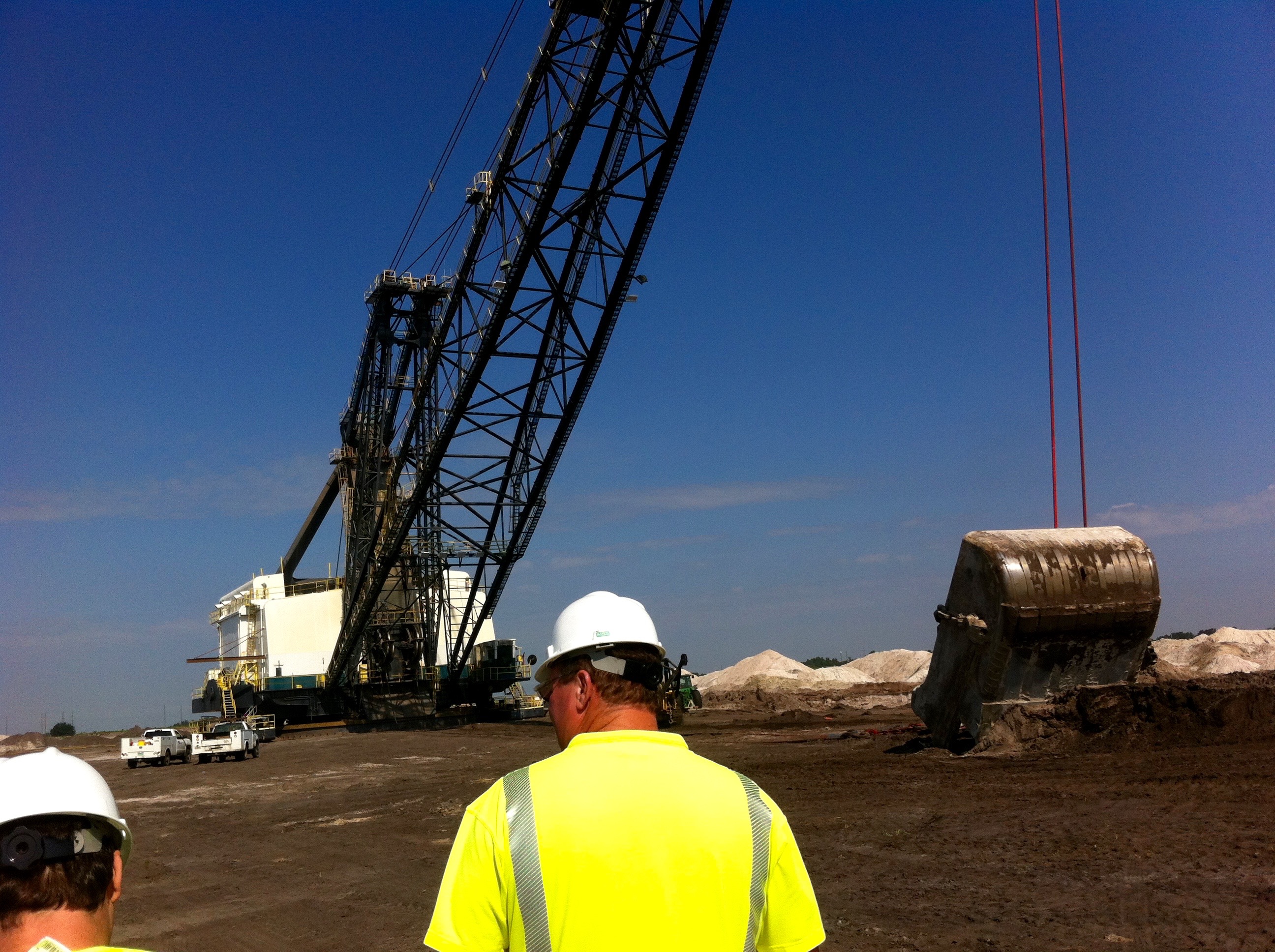
 If your phosphorus fertilizer is sourced from the U.S. it is probably derived from Hillsborough, Polk, Manatee, and Hardee counties in Florida. Recently, I had the opportunity to tour Mosaic’s South Fort Meade Mine facility. The Mosaic Company’s South Fort Meade Mine has an annual production of 6.5 million tons per year running 24/7/365. It’s size is 28,000 total acres with 15,000 currently active acres with 3 drag lines.
If your phosphorus fertilizer is sourced from the U.S. it is probably derived from Hillsborough, Polk, Manatee, and Hardee counties in Florida. Recently, I had the opportunity to tour Mosaic’s South Fort Meade Mine facility. The Mosaic Company’s South Fort Meade Mine has an annual production of 6.5 million tons per year running 24/7/365. It’s size is 28,000 total acres with 15,000 currently active acres with 3 drag lines.
Process Overview: Three Steps
1. Mining – Phosphate matrix is extracted from the ground. Clay and sand are removed. The refined phosphate rock is transported by rail for further processing.
2. Fertilizer production – Mosaic process nutrients in the phosphate rock into a water soluble form suitable for plant uptake
3. Distribution – Finished fertilizer is distributed both domestically and internationally by ship, barge, rail and truck directly to growers.
The massive production draglines are massive excavators (Fig. 1) that actually can move slowly across the mine dragging an oversized bucket. The Production Draglines are manned by just two employees. Each of the draglines weigh 6.9 million pounds and the bucket alone weighs 100,000 lbs (Fig. 2). The mining cut can be up to 320’ (Fig. 3). The overburden (sand & clay) is first removed to uncover the matrix of phosphate rock, sand and clay. The matrix is removed until it reaches hardrock (limestone or dense clay). If you are lucky enough you can discover prehistoric shark teeth or bones from creatures that once ruled the ocean where the mine is today.
Pit cars deliver water hydraulically with 300 psi and 16,000 gym to churn the matrix into a thick slurry that can be pumped back to the plant. At the plant, the washer removes oversized material between 1- 8 inches. Clay is scrubbed and rinsed away where it is moved to the clay reclamation centers. The washer feeds all undersized phosphate and sand smaller that 1mm to the Flotation Plant for separation. A biodegradable soap from pine trees is used to separate the phosphate from the sand. The sand is used to reclaim the mine. Since 1975 all mined land is reclaimed acre for acre (Fig. 4).
The phosphate rock is then loaded and shipped to fertilizer plants all over the US and then it eventually ends up in your hands where you use it grow healthy plants.
Special thanks to Mosaic company and the American Society for Horticulture Science for offering this unique tour.




Further reading:
Mosaic, South Fort Meade mine
https://www.google.com/maps/place/27%C2%B038’47.5%22N+81%C2%B045’25.9%22W/
@27.6465167,-81.7571972,520m/data=!3m2!1e3!4b1!4m2!3m1!1s0x0:0x0
http://www.mosaicco.com/florida/mining.htm
http://www.mosaicco.com/index.htm
The Fertilizer Institute. https://www.tfi.org/introduction-fertilizer/nutrient-science/phosphorous





You must be logged in to post a comment.